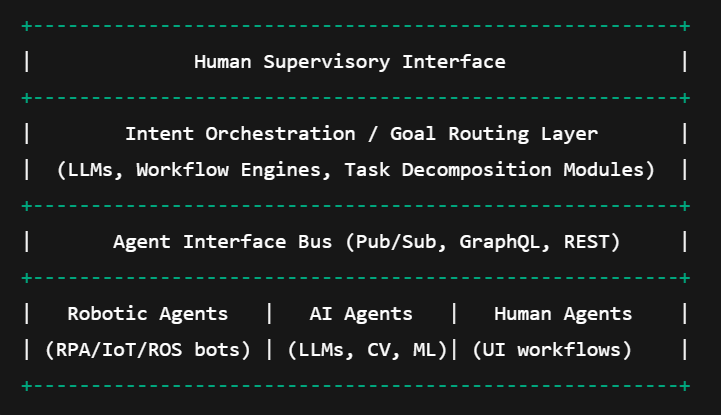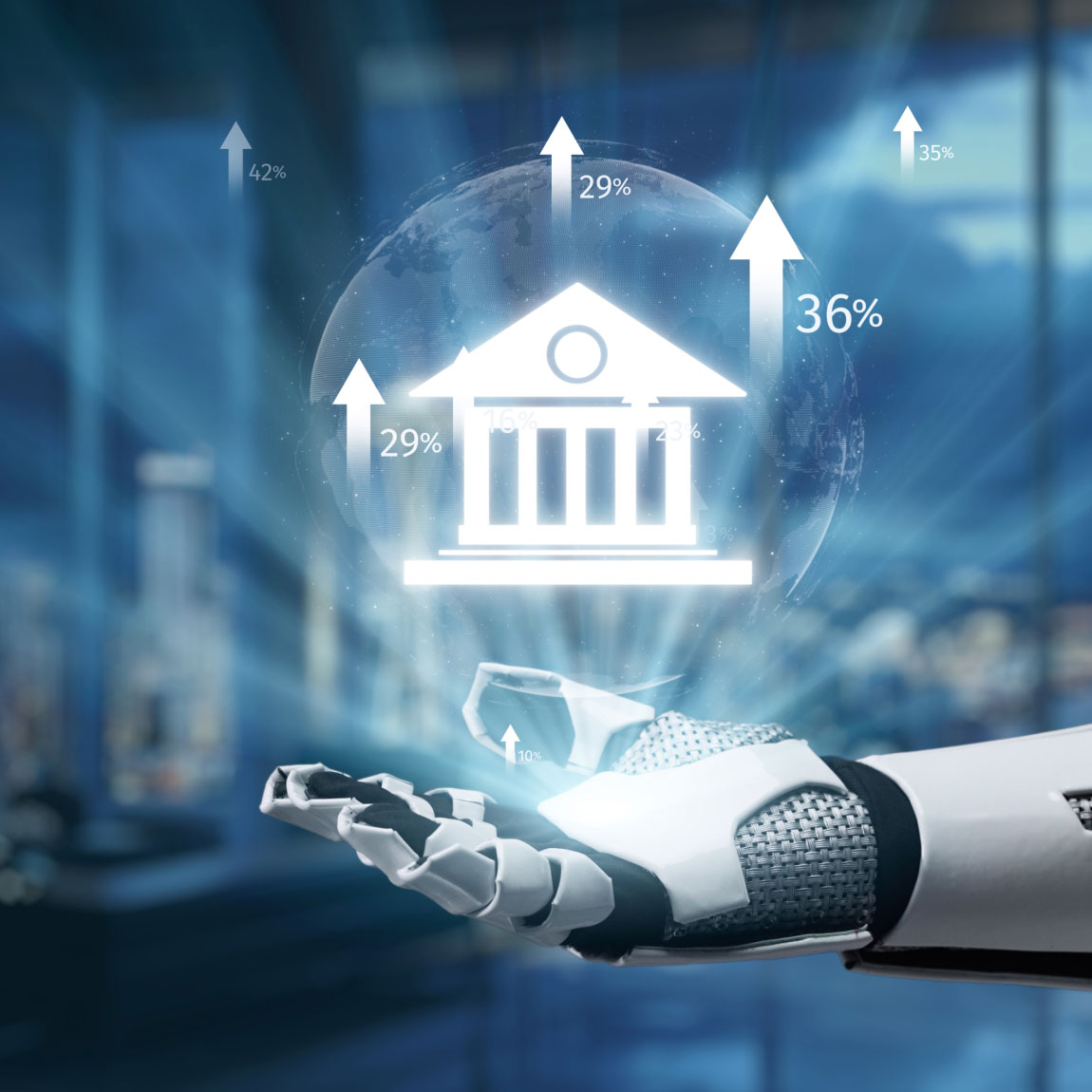Agentic Orchestration Use Cases
BLOG
8 min read
Agentic Orchestration Use Cases: Uniting Humans, Robots, and AI for Maximum Value
Quick Summary
Agentic orchestration is a new coordination model for intelligent automation, where humans, software agents, robots, and AI systems interact and work together seamlessly to achieve shared business goals. Unlike traditional RPA automation or workflow, this model focuses on goal-driven task delegation, collaboration, and context sharing between different types of agents to deliver faster, more reliable, and more scalable outcomes.
As enterprises accelerate toward intelligent automation, the paradigm of agentic orchestration is rapidly reshaping how work is delegated, coordinated, and executed. Unlike traditional task automation, agentic orchestration emphasizes goal-driven collaboration between humans, software agents, robotic systems, and AI models—all operating as autonomous or semi-autonomous agents within a shared ecosystem.
This blog explores what agentic orchestration means from a technical architecture standpoint, and dives into real-world use cases that unite humans, robots, and AI systems to drive measurable business outcomes.
Want to see how agentic orchestration applies to your industry?
Explore tailored use cases with our experts.What is Agentic Orchestration?
At its core, agentic orchestration refers to the coordination layer that manages the interaction between multiple autonomous agents, each with varying levels of intelligence, autonomy, and capabilities. The agent can be a system, tool, or entity with specific capabilities, goals, and decision-making powers.
In this context, an agent could be:
- Human Agent: A human worker with decision-making authority and can provide judgement, oversight, or exception handling.
- RPA Agent: A robotic process automation (RPA) bot handling transactional, rules-driven workflows.
- LLM Agent: A large language model (LLM) handling reasoning, natural language interpretation, and task decomposition.
- Microservice/API Agent: A microservice or event-driven API responding to real-time triggers or events via APIs or service calls.
- IoT Agent: An IoT device reporting environmental or operational data.
What Are the Key Characteristics of Agents?
The Agents may differ in intelligence, autonomy, and execution scope, but agentic orchestration ensures they work cohesively toward shared outcomes with contextual awareness, rather than operating as disconnected systems.
| Attribute | Description |
|---|---|
| Autonomy | Agents act independently within their defined rules |
| Goals | Each agent pursues a specific task or business objective |
| State Awareness | Agents maintain contextual memory of inputs, actions, or outcomes |
| Communication | Agents can exchange messages via APIs, message buses, or natural language. |
This structured communication is what makes agentic orchestration different from traditional automation. It provides a collaborative environment where agents can coordinate dynamically.
How Agentic Orchestration Works?
Implementing agentic orchestration requires a layered system architecture that supports goal-based task decomposition, inter-agent real-time communication, and adaptive delegation.
Reference Architecture

What Are the Core Components of Agentic Orchestration?
These components play a key role and ensuring that the agentic orchestration performs with the desired outcome.
- Orchestration Engine: Maps high-level goals to a series of sub-tasks and routes them to appropriate agents.
- Agent Registry: Maintains metadata on agent capabilities, availability, and status.
- Communication Layer: Event bus or protocol abstraction for async message passing (e.g. Kafka, MQTT, WebSockets).
- Context Store: Centralized memory system or vector DB (e.g. Pinecone, Redis) to maintain shared understanding.
Agentic Orchestration Use Cases You Need to Know About
Let’s look at some of the real-world examples of how agentic orchestration works and the value it provides to enterprises.
Use Case 1: Customer Support Blending AI, RPA, and Humans
Customer support remains a key domain for orchestration. Enterprises aim to reduce repetitive L1 tickets while ensuring seamless escalation for complex cases.
Scenario:
A telecom provider uses agentic orchestration to automate Level 1 support while escalating edge cases to human agents.
Technical Flow:
- AI Agent (LLM) parses user intent from incoming chat.
- RPA Agent retrieves billing data via legacy SAP APIs.
- If an error or non-standard billing issue is detected:
- Contextual thread is handed off to human agent via CRM.
- All previous agent actions are logged in shared memory.
- LLM summarizes resolution for QA or reuse.
Tools: OpenAI GPT-4, UiPath bots, Kafka message bus, Salesforce Service Cloud.
According to Zendesk, 69% of customers prefer resolving simple issues with automation, but escalation to humans must be frictionless.
Use Case 2: Autonomous Field Operations with IoT and Human Oversight
Field operations like infrastructure inspections require coordination between IoT sensors, drones, AI vision models, and humans.
Scenario:
In an industrial maintenance setting, robotic drones perform pipeline inspections with human oversight via an agentic orchestrator.
Technical Flow:
- IoT Agents stream telemetry via MQTT.
- Computer Vision Agents (AI models) detect anomalies in video feeds.
- Task Scheduler routes follow-up actions to:
- RPA bots for updating maintenance records.
- Humans for final approval on safety-critical interventions.
Agentic orchestration is handled by an event-driven platform like Apache NiFi or Node-RED, integrating OpenCV, LLMs for anomaly reports, and Slack for alerts.
Want this in your enterprise?
Talk to usUse Case 3: Procurement with Autonomous Negotiation
Procurement often involves repeated negotiation cycles that can be automated via agent-based orchestration.
Scenario:
A manufacturing company automates supplier negotiation using AI agents with defined economic goals.
Technical Flow:
- Human enters purchase goal: “Acquire 10,000 components under $50k.”
- LLM agent translates this to structured negotiation tasks.
- Multiple negotiator agents (each representing a supplier) simulate rounds using reinforcement learning strategies.
- ComHuman receives a summarized shortlist with price, delivery, and SLA metrics.
Tools: OpenAI function-calling LLMs, Multi-agent RL system, LangChain agent framework, SAP integration layer.
McKinsey estimates AI-driven procurement can reduce sourcing cycle time by 30–40%
What Are the Common Agent Types in Orchestration Systems?
For the agentic orchestration to perform better, it’s important to know the types of agents that can be moderated with orchestration. Here are some of them with their functionalities and examples:
| Agent Type | Function | Example |
|---|---|---|
| LLM Agent | Language understanding & task generation | OpenAI GPT-4, Anthropic Claude |
| RPA Agent | Legacy system task execution | UiPath, Automation Anywhere |
| Human Agent | Judgment, approvals, exception handling | CRM / UI workflows |
| Sensor Agent | Real-time data streaming | MQTT-based devices |
| Vision Agent | Image/video interpretation | OpenCV, YOLO, DeepStream |
| Orchestration Agent | Task routing, prioritization | LangGraph, Temporal.io |
What Are the Key Design Considerations for Agentic Orchestration?
When designing an agentic orchestration system, enterprises must address:
1. Interoperability
- Use interface abstractions: GraphQL, JSON-RPC, OpenAPI specs.
- Wrap legacy bots in adapters for unified task invocation.
2. Contextual Memory
- Use vector stores or structured context graphs to maintain agent memory.
- Allow agents to query shared state before action.
3. Delegation & Escalation
- Design for intent fallback chains: AI → RPA → Human.
- Build rules for agent failure handling and overrides.
4. Observability
- Log agent actions, errors, decisions to centralized dashboards
- Use distributed tracing (e.g., OpenTelemetry) to map cross-agent flows.
What the Future Has in Store with AI as Autonomous Orchestrators?
We are approaching an era where LLM-based orchestrators can dynamically:
- Discover agent capabilities via API introspection.
- Delegate based on goal complexity and reliability scores.
- Adapt workflows in real-time based on downstream agent behavior.
Rather than replacing humans, agentic orchestration emphasizes collaboration between humans, AI, and machines, where each agent contributes its strengths.
Building Enterprise-Ready Agentic Orchestration
Agentic orchestration offers a powerful model of distributed intelligence, where humans, machines, and AI agents collaborate seamlessly toward shared objectives. With careful design, robust communication infrastructure, and intelligent fallback logic, organizations can radically transform their operations, making them faster, more scalable, and more resilient. Enterprises investing in robust orchestration frameworks will improve system reliability through adaptive delegation, scale operations across heterogeneous systems and increase efficiency and responsiveness in mission-driven workflows. Associating with a trusted Agentforce AI agent implementation partner can help build a resilient agentic orchestration framework tailored to your business needs. Connect with us today!
Work with our team to pilot an agentic orchestration use case in your operations
Talk to usFAQs
Agentic orchestration is a smarter way of coordinating work between humans, AI models, RPA bots, IoT devices, and software agents. Instead of each working in isolation, they collaborate as a team toward a shared goal making processes faster, more reliable, and scalable.
The orchestrator acts like a project manager. It breaks down big goals into smaller tasks, assigns them to the right agents (human, AI, or robot), and keeps everything in sync with context sharing and real-time updates.
Agentic AI refers to individual intelligent agents that can act on their own. Orchestration, on the other hand, is the coordination layer that helps multiple agents (AI, bots, humans, systems) work together smoothly toward the same outcome.
UiPath brings orchestration closer to enterprise automation. It combines RPA bots with AI agents and human-in-the-loop workflows, ensuring tasks flow seamlessly across systems while maintaining governance, observability, and compliance.


